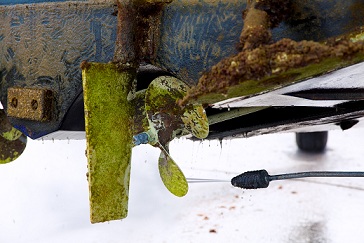Fighting seaweed with green technology

Related topics
Environment & climate action Innovation Funding Researchers Marie Skłodowska Curie actions Germany Italy Sweden United Kingdom Switzerland Environmentdate: 07/01/2015
Project: Surface engineering for antifouling - Co...
acronym: SEACOAT
See also: CORDIS
Contact: Contact
The research team studied the processes involved in the colonising of marine fouling organisms on surfaces and helped develop new, environmentally-friendly materials and coatings to treat them. The researchers examined the physical and chemical properties of surfaces at nano- and micro-scale to see how they influenced the adhesion of fouling organisms.
A key breakthrough of the project was the use of surface engineering technologies to build coatings adapted for different surface properties. They were tested with advanced imaging techniques such as digital holography. The first results reduced the initial adhesion of marine bacteria, spores of seaweeds and the larvae of barnacles while lowering the strength of attachment of those organisms that did manage to adhere.
James Callow, SEACOAT project coordinator, Professor of Plant Science at the University of Birmingham, in the United Kingdom, speaks about the costs of biofouling: “Even before corrosion occurs, organic growth can increase the roughness of ship hulls, affecting maneuverability, increasing drag and raising a ship's fuel consumption by up to 30%. The global annual cost of hull fouling is estimated to be $180 to $260 billion,” he says.
“Marine biofouling is economically and environmentally expensive and affects the competitiveness of European companies operating in different areas of the marine environment, from commercial shipping to underwater structures like oil rigs and wind farms,” explains Callow. “This is important for Europe: while the problem of marine biofouling is worldwide, the majority of the companies that manufacture marine antifouling coatings are European,” he adds.
The project, funded by the EU’s Marie Curie programme which among others supports early-stage researchers, gathered six universities and two business partners to provide training to 21 young scientists. “We have trained a group of young researchers within an interdisciplinary area who have now skills needed for future research on marine biofouling,” says Callow.
The SEACOAT’s coordinator believes that the Marie Curie training courses could give the 21 young fellows a competitive advantage when applying for research positions in the subject area. The researchers are able to show expertise in synthesising novel antifouling coatings, understanding their physical and chemical properties and characterising their biological performance.
Moreover, the training courses promoted trans-national, interdisciplinary and inter-sectoral research, while giving each trainee transferable lifetime skills. “The training is also expected to help the fellows’ future careers in biomedical science since the problem of fouling of medical devices such as stents - with bacteria or other organisms - is similar in many respects to the fouling of ships and other structures in the marine environment,” concludes Callow.